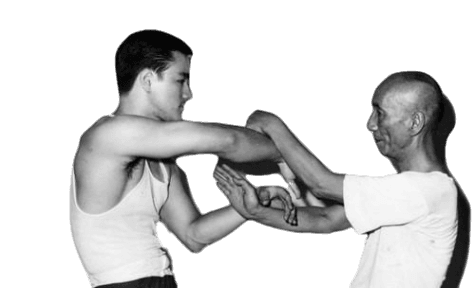The History of Chi Sao in Wing Chun Kung Fu: Tracing the Evolution of the Practice
By Maurice Novoa a master under the Yuen Kay Shan, Ip Man and Pan Nam lineages.
Introduction:
Chi Sao, often referred to as “sticky hands,” is a foundational training method in Wing Chun Kung Fu. It is a dynamic exercise that focuses on developing sensitivity, reflexes, and effective close-range combat techniques. To fully appreciate the significance of Chi Sao, it is essential to explore its rich history and trace its evolution within the Wing Chun system.
1. Origins in the Red Boat Opera Troupes
The origins of Chi Sao can be traced back to the Buddhist monastery. The five monk elders are believed to have developed the Wing Chun system, including the practice of Chi Sao, during the late Qing dynasty. One intriguing aspect of Chi Sao’s origins is its purported connection to the Red Boat Opera Troupes.
The Red Boat Opera Troupes, known for their performances and martial arts skills, served as a sanctuary for revolutionaries and rebels during times of political unrest. It is said that some members of the Red Boat Opera Troupes were skilled fighters and even assassins. The practice of Chi Sao, with its emphasis on close-quarters combat and sensitivity, was purportedly used by these performers as a means of self-defense and protection during their clandestine activities.
Legend has it that the Red Boat Opera Troupes encountered numerous challenges, including confrontations with guards protecting individuals they sought to assassinate. Chi Sao’s intricate hand techniques and sensitivity allowed the performers to detect and neutralize the guards’ movements swiftly, providing them with an advantage in these life-or-death situations.
2. Passing Down the Tradition: Ip Man and His Disciples
One of the key figures in popularizing Wing Chun and Chi Sao in the modern era was Grandmaster Yip Man. Yip Man, a student of Chan Wah-shun, became one of the most influential Wing Chun masters of the 20th century. He taught Wing Chun openly in Hong Kong and had many notable disciples, including Bruce Lee.
Yip Man not only preserved the essence of Chi Sao but also emphasized its practicality and effectiveness for real-life combat situations. His teachings incorporated the principles of sensitivity, structure, and efficiency, enabling his disciples to understand the underlying concepts of Chi Sao and apply them effectively.
3. Evolution and Adaptation
Over time, Chi Sao has evolved and adapted within the Wing Chun community. Different lineages and practitioners have contributed their insights and refinements to the practice, enhancing its effectiveness. While the historical connection to the Red Boat Opera Troupes adds a layer of intrigue, it is important to recognize that Chi Sao’s evolution extends beyond its alleged origins.
The development of the different Chi Sao variations, the integration of other martial arts, and the practical experiences of practitioners have all contributed to the evolution of Chi Sao. Today, Chi Sao continues to evolve as practitioners explore new training methods, experiment with variations, and share their knowledge with others.
4. Wing Chun Integration with Other Disciplines
As Wing Chun has gained recognition and popularity, it has been integrated with other martial arts and combat systems. This integration has led to the exchange of ideas and techniques, resulting in the enrichment of Chi Sao as a training method. The incorporation of elements from Western boxing, Brazilian Jiu-Jitsu, and other martial arts has expanded the application and versatility of Chi Sao, making it a well-rounded training tool.
5. Chi Sao in the Modern Era
In the modern era, Chi Sao remains a vital component of Wing Chun training. It is practiced by martial artists worldwide, encompassing both traditional and contemporary approaches. While the historical context of Chi Sao’s origins in the Red Boat Opera Troupes adds a captivating element to its story, it is essential to approach this information with critical thinking and consider it as part of the folklore surrounding Wing Chun’s history.
Regardless of its origins, Chi Sao stands as a testament to the effectiveness of Wing Chun principles and techniques in close-quarters combat. Its focus on sensitivity, adaptability, and efficient movements continues to be valued by practitioners seeking to develop practical self-defense skills.
Conclusion
The history of Chi Sao in Wing Chun Kung Fu is a fascinating journey that spans centuries. While its alleged connection to the Red Boat Opera Troupes adds an intriguing aspect to its origins, it is crucial to approach this information with an open mind, understanding that legends and folklore often intertwine with historical accounts.
Regardless of its historical origins, Chi Sao remains a core element of Wing Chun, emphasizing sensitivity, reflexes, and effective close-range combat techniques. As practitioners engage in Chi Sao training, they contribute to the ongoing legacy of this practice, adding their insights and experiences to the collective body of knowledge.
By delving into the history of Chi Sao, we gain a deeper appreciation for its evolution within the Wing Chun system and recognize its significance in the development of effective self-defense skills.

